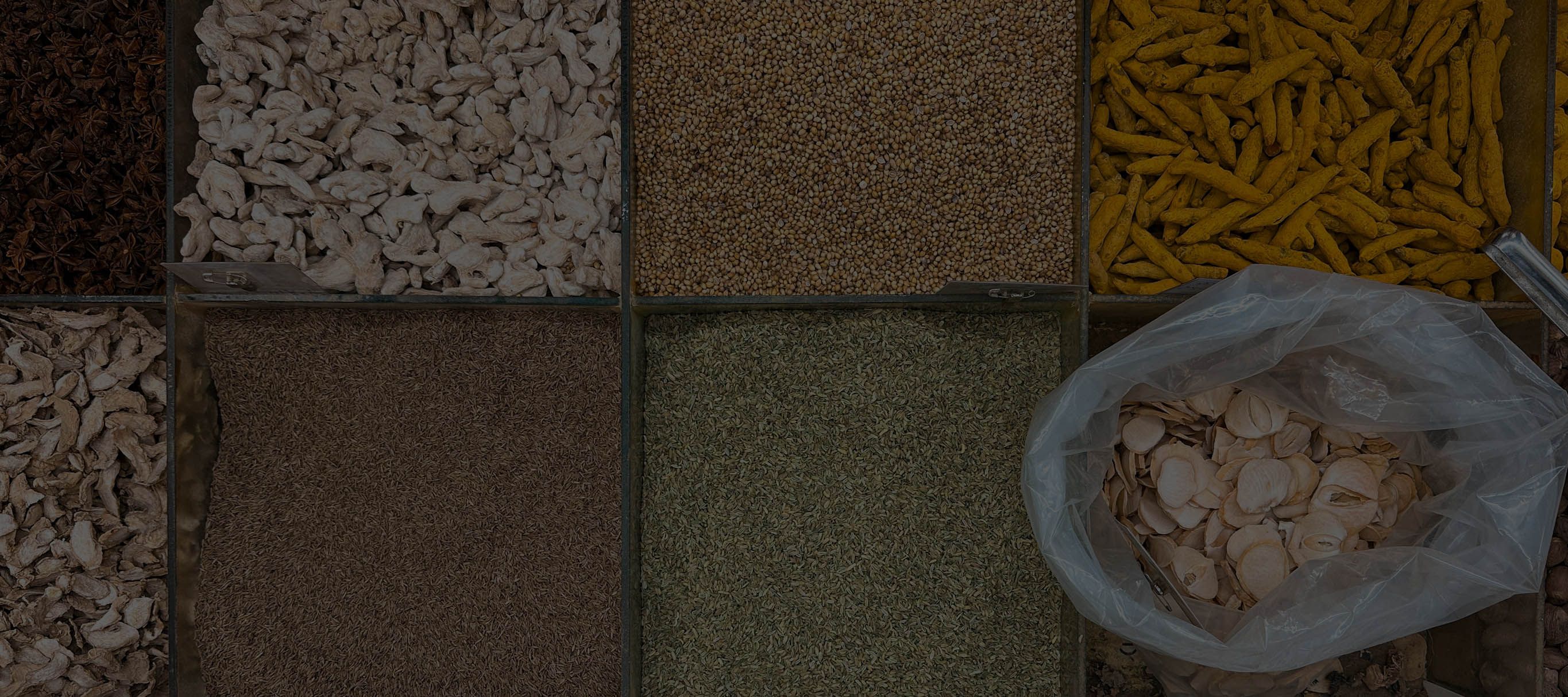

Qatari Food: from Bedouin to Michelin
Words & images by Sofia Levin
Last updated 18.07.2025
Doha, the capital of Qatar, was somewhere I knew little about. Until our trip, my longest visits were limited to eating Lebanese food at the airport during layovers to Europe. I’d never thought much about the cuisine, either.
Qatari food culture was born from the Bedouin way of life, shaped by necessity, sustained by trade and more recently recognised by Michelin stars twinkling in the constellation of global fine dining. It’s an edible epic that unfolds with nomadic desert dwellers and ancient pearl divers – long before the slick of oil wealth or any international recognition – and that continues to mature beyond its cultural mosaic of Yemeni, Levantine, Iranian, African and Indian influence. Like much of the Persian Gulf, Qatar’s culinary reputation isn’t as globally known as its futuristic skyline or sporting events, but its dishes connect the dots between Doha’s place in history and modernity.
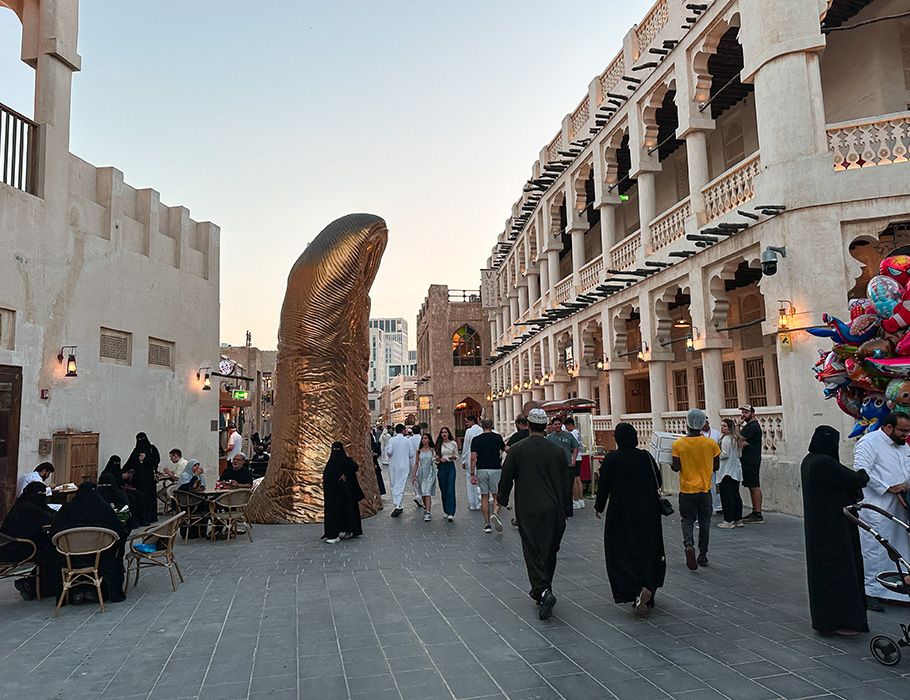
4000 BCE
There is evidence of human life in the Qatari desert dating back millennia, including the Stone, Bronze and Iron Ages. Ancient rock art from the Neolithic Period depicts fish and boats, a nod to Qatari people’s seafaring origins. Qatar’s culinary history is inextricably linked to its geography, a prime trading position as a peninsula jutting out into the Persian Gulf. Everything that ends up on a plate in Doha today can be traced back to two groups: the nomadic Bedouin tribes and the Hadar people (settled pearl divers).
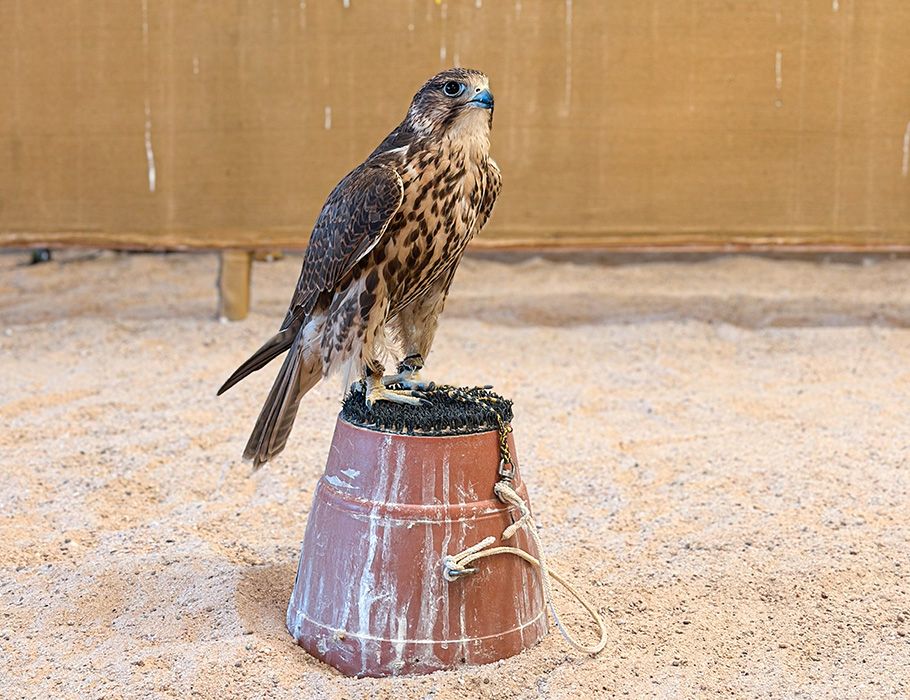
In the desert, Bedouins used falcons to hunt, kept camels and goats, and survived off what they could carry (mostly grains and calorie-rich dates and syrup). Meals were – and still are – large and communal: rice dishes such as machboos and stews like thareed designed to feed many from little (see more on traditional dishes here). The Hadars were desert dwellers who settled along the coast and formed pearl-diving communities, living mostly off seafood flavoured with traded ingredients, like dried black limes from Iran and turmeric from India.
For centuries, survival revolved around pearl diving, one of Qatar’s oldest industries dating back some 7,000 years. Men would leave on dhows (traditional sail boats) for months on end, free diving for oysters and hoping to bring back pearls to trade. It was dangerous work; the men would dive as many as 60 times per day, holding their breath for up to two minutes at a time, only to face thrashing waves and disease on deck.
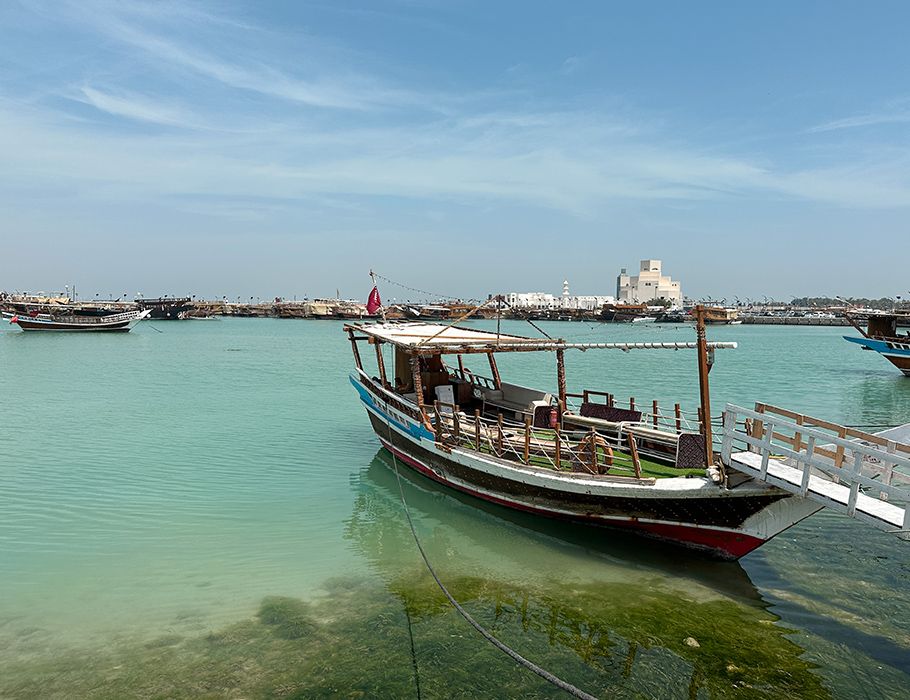
1700s-1800s
Qatar’s location at the heart of the Indian Ocean’s trade routes meant that by the 18th century, dhows sailed regularly between Doha, India, Persia, East Africa and the Levant. This is why Qatari spice blends are charged with cardamom and cinnamon, and why loomi (dried lime) from modern-day Iran is considered quintessential. Slow-cooked Yemeni meats, Indian biriyani and Iranian kebabs have been embraced as local dishes.
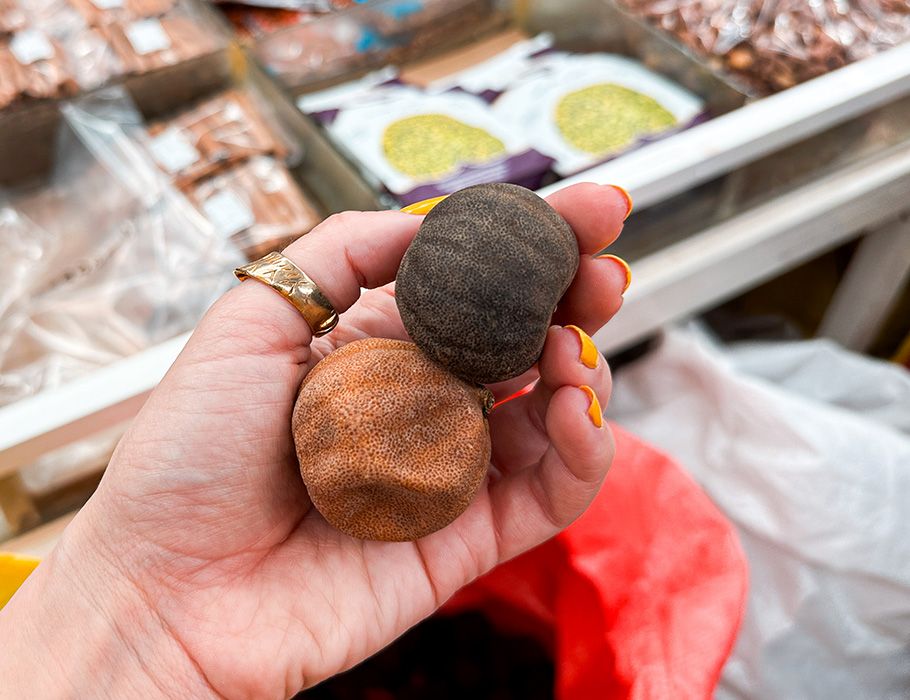
1900s
The country faced many tribulations from the late 1800s through to independence from Britain in 1971. Qatar struggled against the Ottoman Empire; endured a storm in 1925 that killed half of the seafaring population; and survived the collapse of the pearl diving industry after cultured pearls were invented in the 1930s. Still, pearl diving and trade sustained Qatar until oil was discovered in 1939, though WWII meant that extraction didn’t occur until 1971 when another field was found offshore in the north.
The war’s end and discovery of oil propelled commercial development in the mid 1900s. During the ‘60s and ‘70s, Egyptians, Lebanese and Palestinian workers migrated to support Qatar’s rapid growth, followed by people from South and Southeast Asia. They brought their food with them. Streetside stands run by Indian and Pakistani families popped up serving karak (spiced milk tea). Curry houses opened beside Lebanese bakeries and Egyptian ful shops. Traditional Qatari dishes continued to be preserved, but the culinary landscape was expanding.
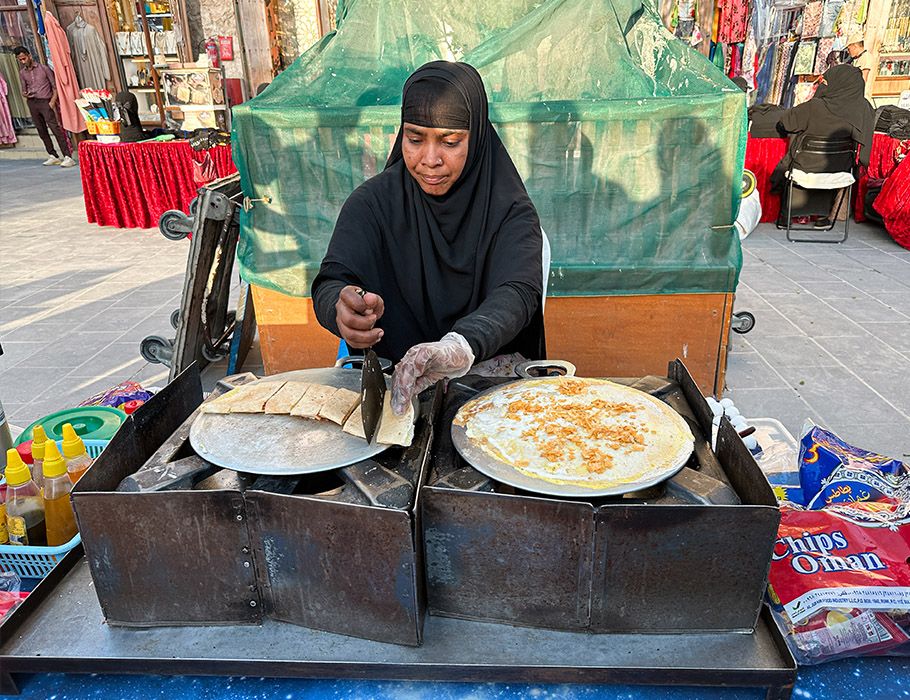
2000s
Qatar’s economic boom meant that shopping malls became the focus during the second half of the 20th century, with the famous Souq Waqif falling into disrepair. The souq was a trade hub in the 19th-century, but didn’t have permanent stalls due to frequent flooding. Waqif, which means “standing” in Arabic, is a reference to how seawater lapped at merchants’ feet as they sold their wares. In 2003, a fire destroyed most of the neglected souq. It was a wake-up call. An artist was commissioned to redesign Souq Waqif based on history and heritage. It reopened in 2006.
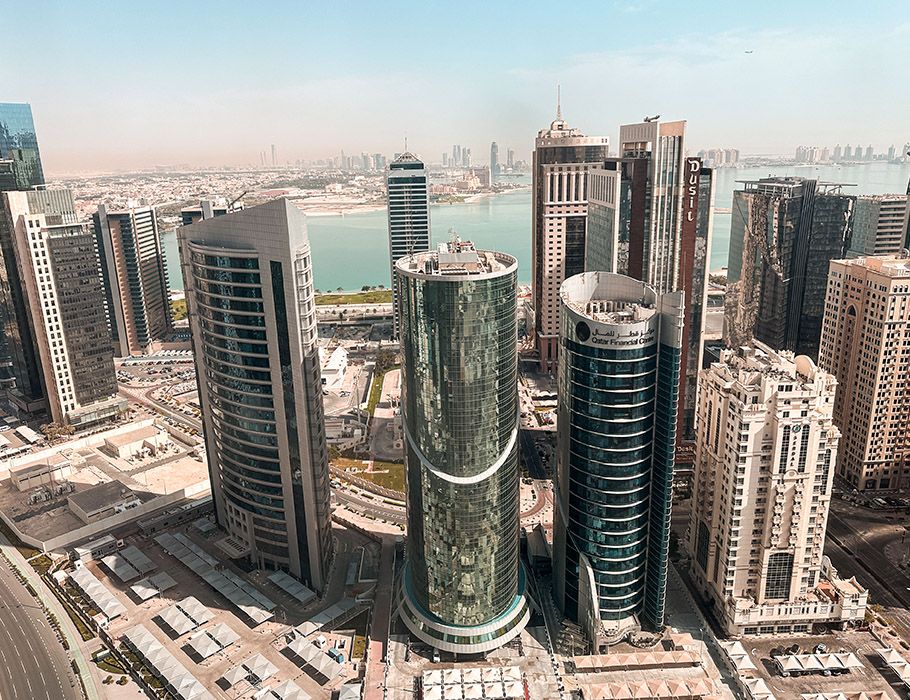
Present Day
As Qatar continued to grow off the back of oil and gas revenue, there was an increased need for workers, with most arriving from South Asia. Preparations for hosting the FIFA World Cup 2022 drove further growth, and by 2019, international migrants accounted for nearly 78 per cent of the population and made up 95 per cent of the workforce. Ahead of one of the biggest sporting events in the world, Qatar began promoting its cultural identity, which included celebrating traditional food.
In 2024, Michelin launched its first guide in Doha (2025), featuring 33 restaurants (including two venues with one star and four Bib Gourmands). With the launch, Qatar became the second country in the Middle East to host the guide, following Dubai. Though many of the highlighted restaurants are upscale or international in focus, the guide’s arrival immediately placed Qatar on the hospitality world stage. The recognition, regardless of the changing global culinary landscape, will likely have a ripple effect on the next generation of chefs, inspiring further curiosity about local food traditions.
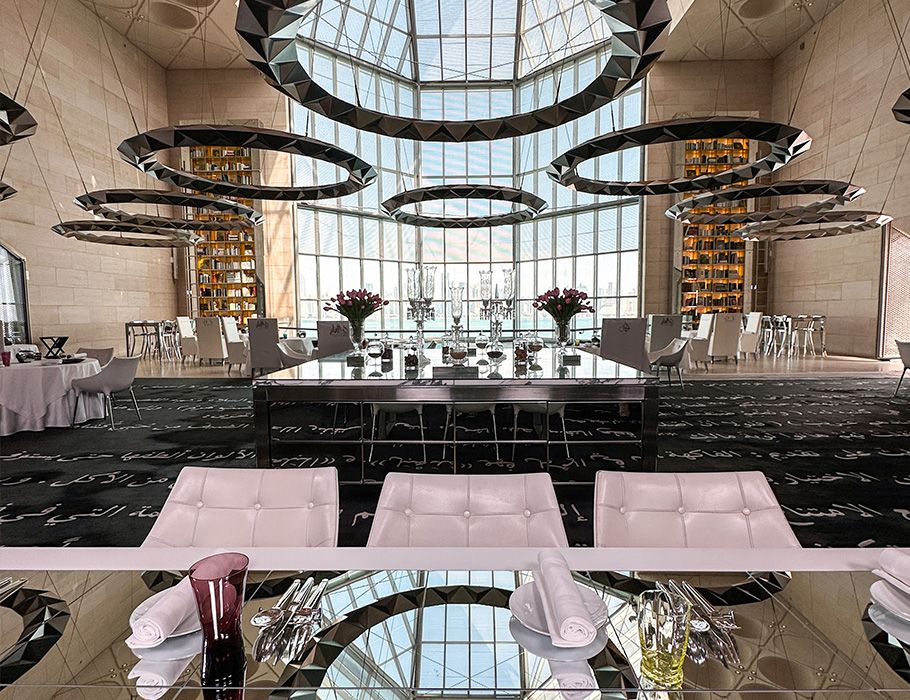
Want to know more about Qatari food? Here are 19 dishes to try in Doha.
Join the Eat Curiously Movement
Subscribe to the food newsletter that goes deeper.
